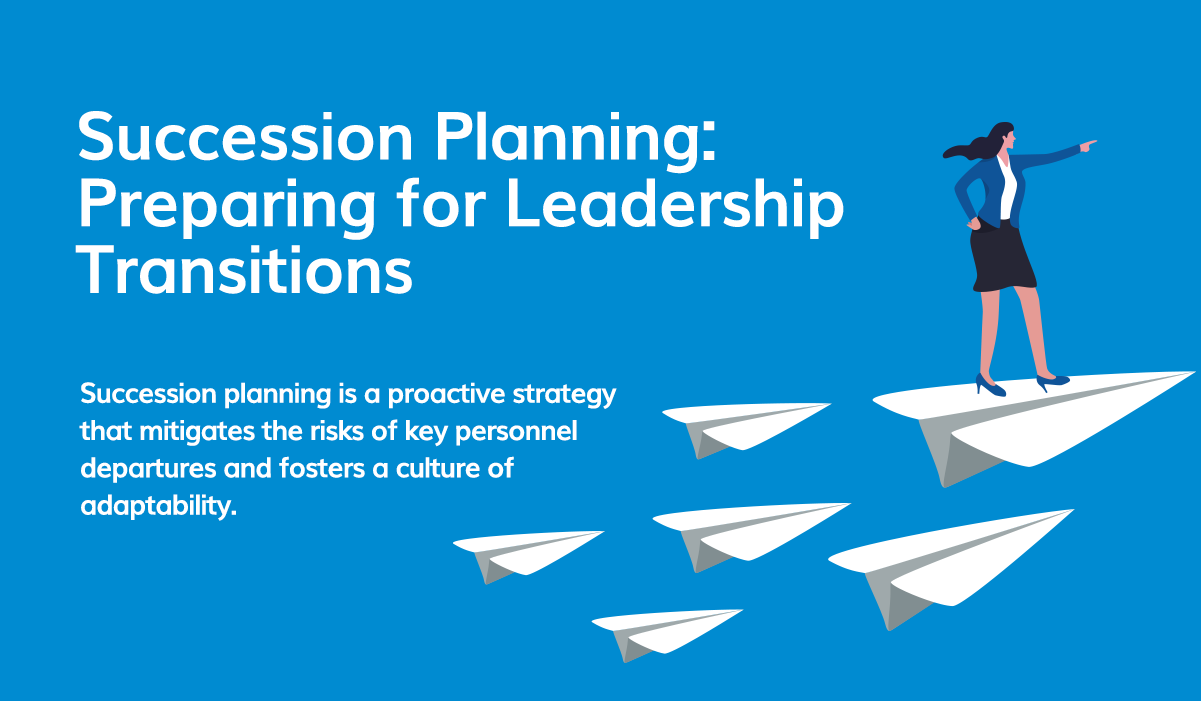It’s great that your organisation is growing, but do you have a growth plan… and what about a succession plan? Shockingly, 65% do not have a formal succession plan. You may or may not be planning a change in management, but the time will come when change is due or necessary – and one strategic practice stands out as a linchpin for sustained success: succession planning. Beyond merely filling leadership voids, succession planning is the cornerstone of organisational resilience and future-proofing. In this blog post, we’ll delve into the many pluses of effective succession planning and share some tips for a seamless transition leadership within your organisation.
The Power of Succession Planning
Succession planning is more than a corporate formality; it’s a proactive strategy that empowers organisations to thrive amid change. By cultivating a pipeline of capable leaders, you mitigate the risks associated with key personnel departures and foster a culture of continuous growth and adaptability. A succession plan can be viewed as an employee growth strategy, sharing some elements with a general growth plan. However, its emphasis lies more on the specific aspect of employee development.
Identifying Key Positions: Building the Foundation
Embark on your succession planning journey by identifying the key roles within your company. These aren’t just titles on an organisational chart; they are the pivotal roles that shape your company’s vision and drive its success.
Assessing Current Talent: Nurturing Potential
Evaluate the current talent pool with a discerning eye. Identify individuals with not just the skills for today but the potential to lead tomorrow. Succession planning is an investment in talent, a commitment to nurturing and developing the future leaders within your ranks.
Leadership Development Programs: Cultivating Excellence
Craft targeted leadership development programs that go beyond routine training. Foster an environment that cultivates excellence, providing mentorship, exposure to diverse challenges, and opportunities for skill refinement.
Regular Talent Reviews: Continuous Growth
Make talent reviews a regular part of your organisational rhythm. Assess the progress and development of potential successors, identifying areas for growth and crafting tailored development plans to nurture their continuous evolution.
Communication and Transparency: Instilling Confidence
Communicate the significance of succession planning with transparency. When employees understand the criteria for advancement and witness the organisation’s commitment to internal talent, it instils confidence and a sense of belonging.
Internal and External Talent Pool: Embracing Diversity
Maintain a dynamic talent pool by considering both internal and external candidates for key positions. Embrace diversity in thought and experience, enriching your leadership pipeline with a blend of internal expertise and external perspectives.
Ask for Feedback
Seek feedback from employees involved in the succession planning process. Use this input to adapt and refine your succession plan, keeping it aligned with the evolving needs of your organisation.
Beyond a strategic imperative, strategic succession planning is a commitment to resilience, adaptability, and the continual elevation of your company’s leadership prowess. We hope these tips help in ensuring that your organisation not only survives but thrives in the face of change!
Share this article with a friend or colleague


